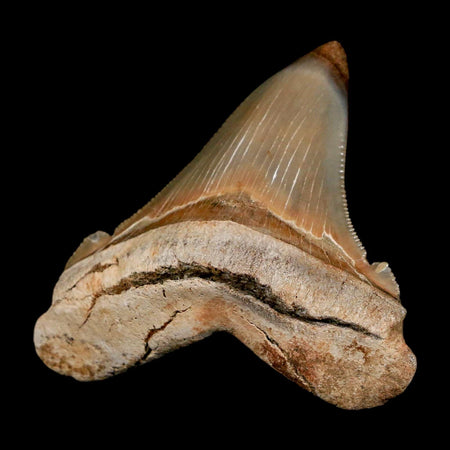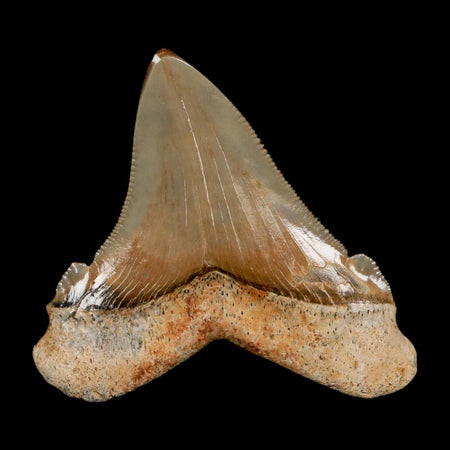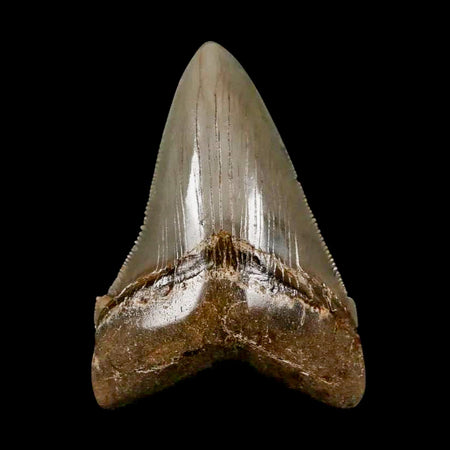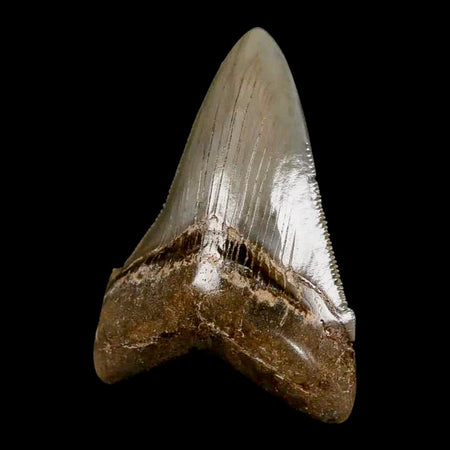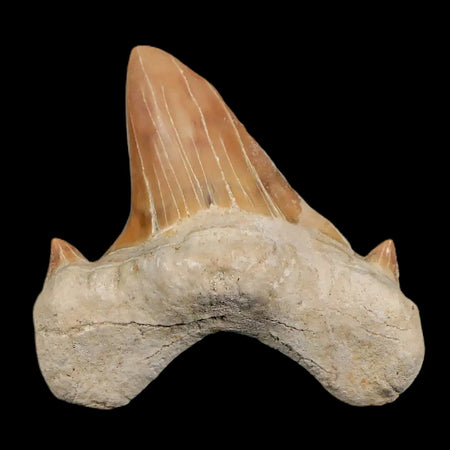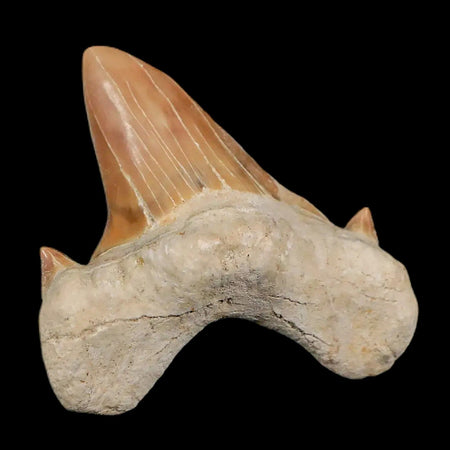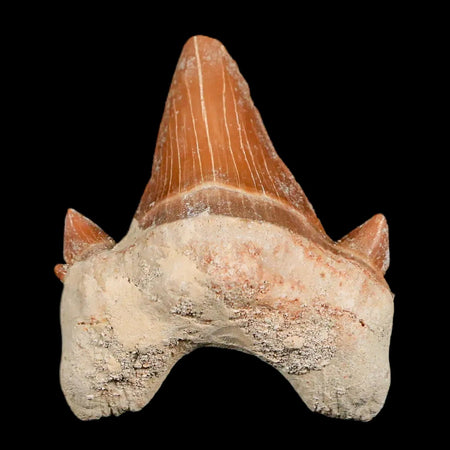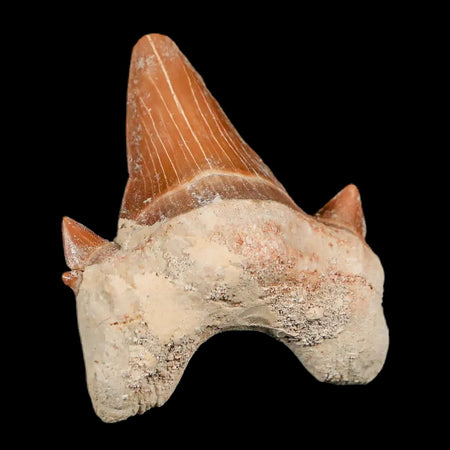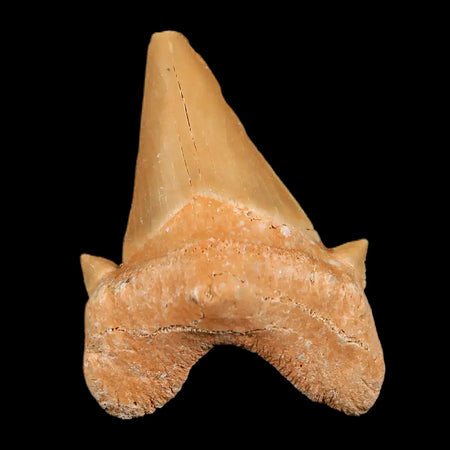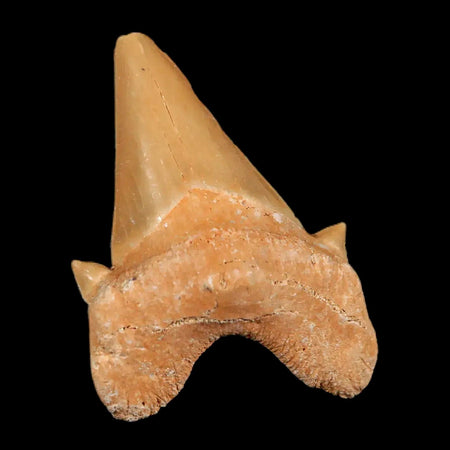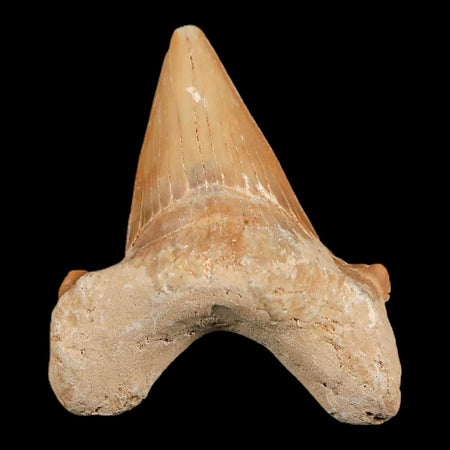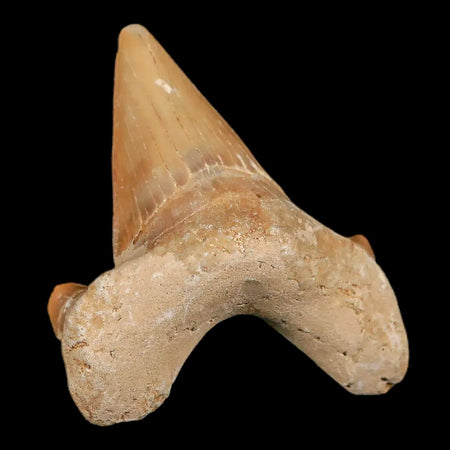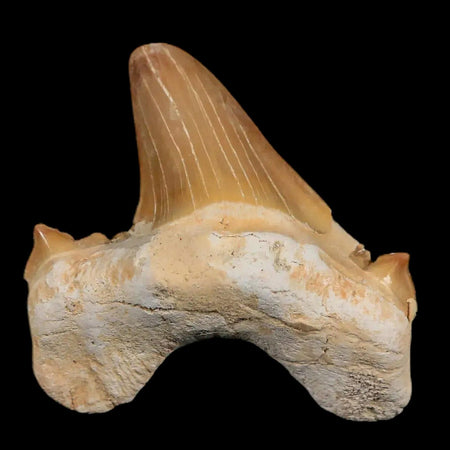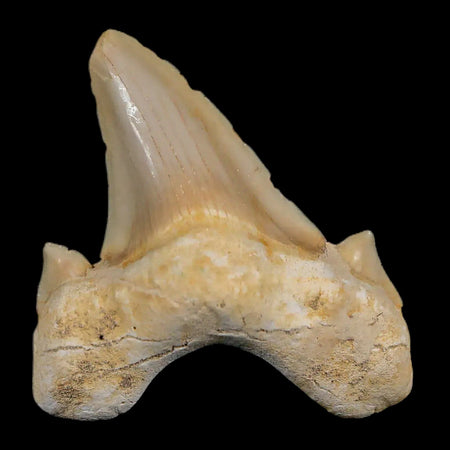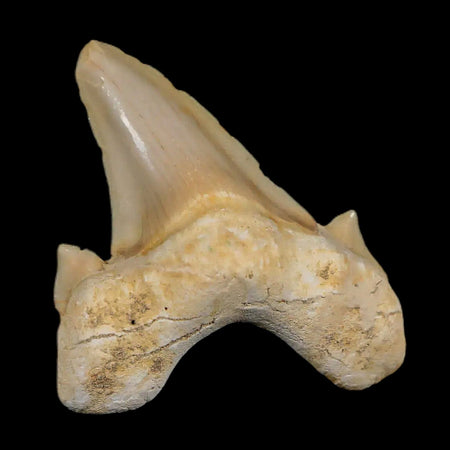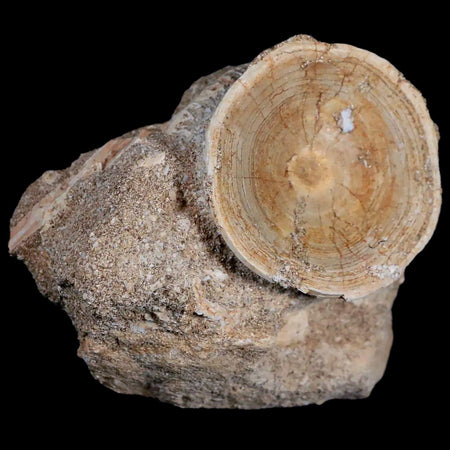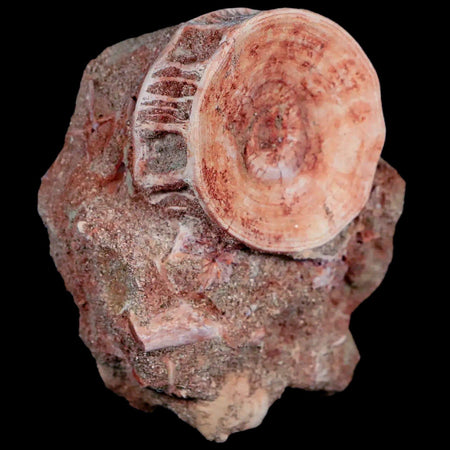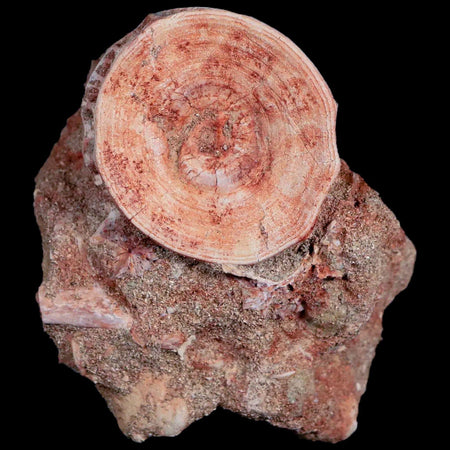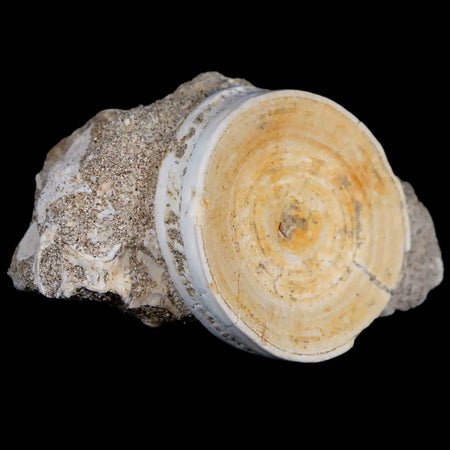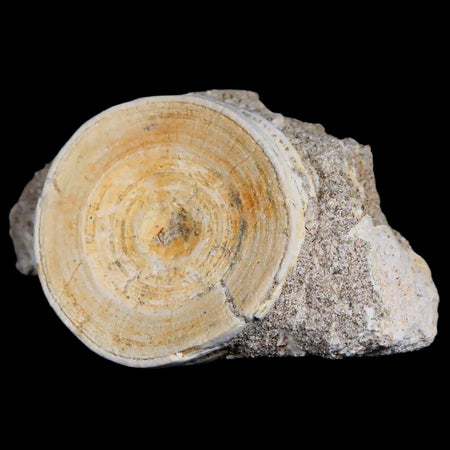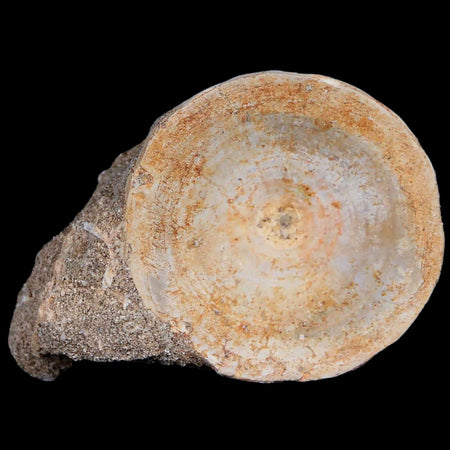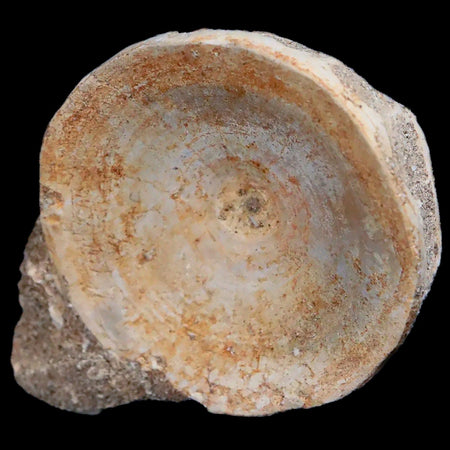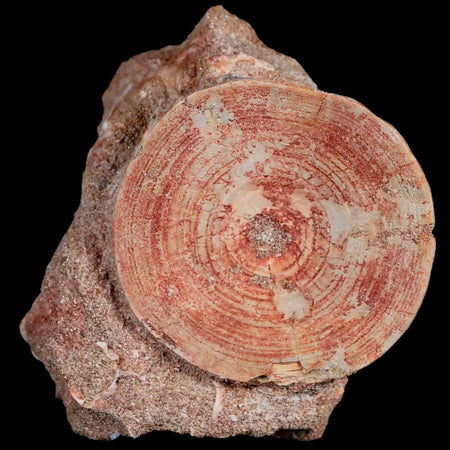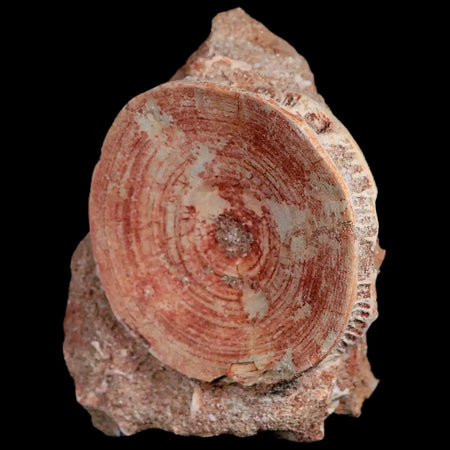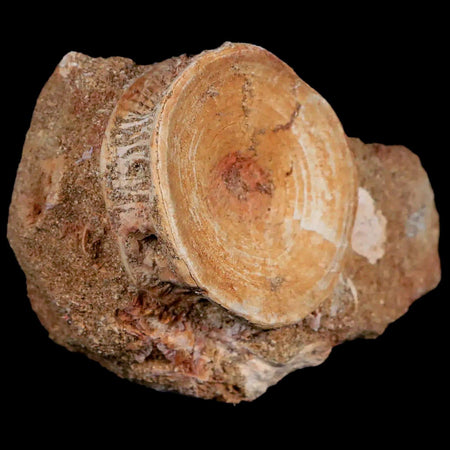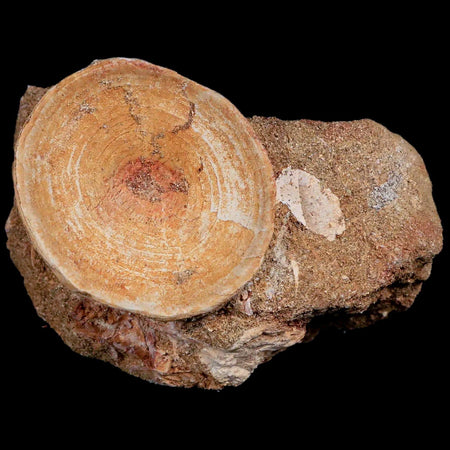Otodus Obliquus Shark Fossils
Explore the Ancient Power of Otodus Shark Fossils
Otodus (ear-shaped tooth) is an extinct genus of Lamniformes, a shark order that includes great whites and Megalodon. Otodus skeletons were composed of cartilage, not bone, which accounts for the relatively few fossil skeletal structures that have been found. Featuring teeth up to 4 inches in length and reaching lengths of up to 40 feet, these large predators inhabited the Paleocene and Miocene periods. Their fossils have been found in waters from Africa, Asia, Europe, and North America.
How Does Otodus Help Track the Evolution of Megalodon?
The genus Otodus is suspected to be the ancestor of Megalodon, making it an important member of a family known as the Otodontidae. The fossils demonstrate a gradual increase in tooth size, followed by the eventual development of serrations. This could suggest a change in prey types and hunting methods. By studying Otodus teeth, paleontologists can track this evolutionary trend over millions of years.
Why Are Otodus Teeth Found in the Phosphate Mines?
Phosphate-rich sedimentary rock forms one of the best environments for fossil preservation. Otodus fossils are primarily found in phosphate mines in North Africa, particularly in Morocco, where these ancient seabeds have solidified into mineral-rich layers for over 50 million years. The strange chemical composition of these rocks is highly facilitative to preserving the minute details of fossils, including the shine of tooth enamel and the arrangement of roots.
What Do the Smooth Edges of Otodus Teeth Reveal About Its Diet?
The teeth of an Otodus had smooth, non-serrated edges, as opposed to those of its offspring. This suggests that it fed mainly on soft-bodied prey, such as early whales, large fish, and cephalopods. In contrast, predators with serrated-edged teeth, such as the Megalodon, which were suitable for tearing through bones and tougher flesh, had a somewhat different mode of feeding.
Can Otodus Fossils Reveal Ancient Ocean Temperatures?
Yes, they can. Oxygen isotope ratios can be obtained from the isotope analysis of Otodus tooth enamel and used to estimate the seawater temperatures at the time the shark lived. These clues enable the reconstruction of ancient marine environments and the study of climate fluctuations during the Paleocene and Eocene epochs.
What is the Largest Otodus Tooth Found in Existence?
The largest known teeth of Otodus can reach just above five inches, putting them in competition with those of the later species known as Carcharocles angustidens. Although not as large as those of Megalodon, the teeth of Otodus are among the largest ever found in shark fossils, suggesting that this shark could have grown to approximately 30–40 feet in length, making it one of the largest predators of its time.
How Do Otodus Fossils Differ Regionally?
Fossils exhibit slight differences in color, quality of preservation, and mineral content. These regional differences are due to variances in the geological makeup and fossilization conditions. In some localities, a difference in species over time is even observable, contributing to a better understanding of the adaptations Otodus made in response to changing oceanic conditions.
Is There Evidence Otodus Sharks Migrated Across Oceans?
Yes, the worldwide distribution of fossils points toward the highly migratory nature of Otodus sharks. Fossils have been unearthed on every continent except Antarctica, intimating they inhabited the warm, shallow seas across the globe. This explains why Otodus comes to be considered among the first extreme predators that were broadly distributed.
Why Are Otodus Fossils Frequently Misidentified?
This is because the evolutionary association between Otodus and the later megatooth sharks results in similarities between the teeth of Otodus and those of species such as Carcharocles angustidens. In contrast, Otodus teeth typically exhibit no serrations and have a more robust, triangular shape. Attention to subtle details, such as root thickness and the presence or absence of a point, is necessary for proper identification.
What Makes Otodus One of the Most Important Paleocene Predators?
Being among the first large sharks to appear after dinosaurs became extinct, Otodus filled a key ecological niche. Most importantly, Otodus dominated ocean ecosystems at a time when life was recovering from the Cretaceous–Paleogene extinction event. Its beginning claims the new marine order is dominated by sharks and mammals rather than reptiles.
How Do Otodus Fossils Reflect Ancient Food Chains?
Otodus is likely positioned at the middle of the food chain by feeding on early marine mammals, such as Pakicetus, or large bony fish. The existence of Otodus suggests that complex marine ecosystems emerged shortly after the extinction of the dinosaurs. Fossils of prey species found in association with Otodus teeth give further insights into the ancient oceans' food webs.








